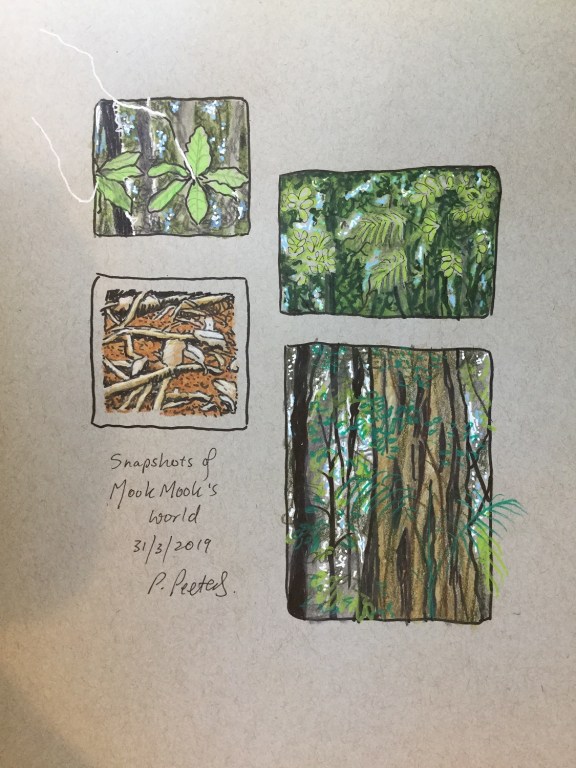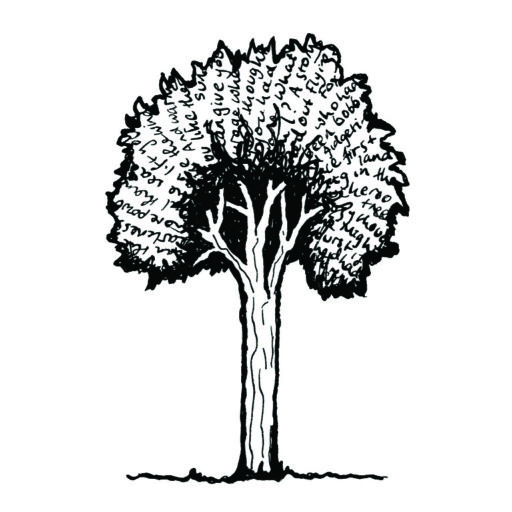“Have they been planted here?” the lady asked. I thought it was an odd question, but then I realized she was thinking of the sort of figs that you eat. We were standing on the edge of the rainforest, at Mary Cairncross Reserve. The strangler figs were hidden deep inside. “Oh no, they’re native,” I said. “Perhaps planted by a bird or a bat.”

Five strangler figs about to be explored by a team of scientists, artists and photographers as part of a Bioblitz. With the help of arborists, we would reach the canopies too. How will we describe these figs?
First are the names: Watkin’s Fig the common english name, Ficus watkinsiana to western science, Gureya to the local Jinibara people, Buyei to the Yugambeh people back where I live, and probably many, many more names.
With pen and pencils, I try to catch glimpses of the world of a fig. And of the people who are studying them.

The entomologists Kathy Ebert and Geoff Monteith might describe the figs by the dung beetles that call them home.

Bryologist Andy Franks might describe a fig by its green cloak of mosses, liverworts and maybe even hornworts.

The fungi experts Sandra, Kaylene and Susy might describe each fig by the fungal fruiting bodies that emerge on them and around them. But what mysterious mycorrhizal networks are hidden from our view?


Meanwhile, the rainforest birds and the giant earthworms do their thing, while we humans scurry about with shrieks of wonder and delight. How do they describe the figs? And what do they think of us?




But I know I am merely scratching the surface. So many impressions come and go, so many questions are left unanswered. Clouds empty and then lift, light shifts and colours change, beasts move and leaves expand, fungal threads reach and swell.
How do you describe a fig? It’s a quest that could last a lifetime.


Keep going this is terrific
Thanks Robert! It’s so much fun I find it hard to stop 🙂
Such an interesting and important project, Paula! It was covered briefly on the Country program (?) this morning on ABC RN.
Oh good to hear it’s getting a little coverage. The people who organized it – folks from the Sunshine Coast Regional Council – did a fabulous job, and there was a terrific, positive vibe for the whole week. Despite the wet weather!
Wow….your sketchbook pages are so beautiful.
Thanks Sarah!
I was going to describe a fig from a glutton’s perspective…luscious, juicy, etc….but you’re stuff is entirely fascinating….a fig is so much more!
Thanks Sue! Maybe the fruit-doves and the bats would agree with you about luscious and juicy… but the fruits I find on the forest floor are either green and unripe or over-ripe and ravaged by hungry beaks / snouts. So many ways to appreciate a fig!
Love your beautiful drawings, especially the one of the mighty strangler. What a great project! You have shown beautifully how these trees are truly an ecosystem in their own right.
Thanks Sarah! The more you look, the more you see…